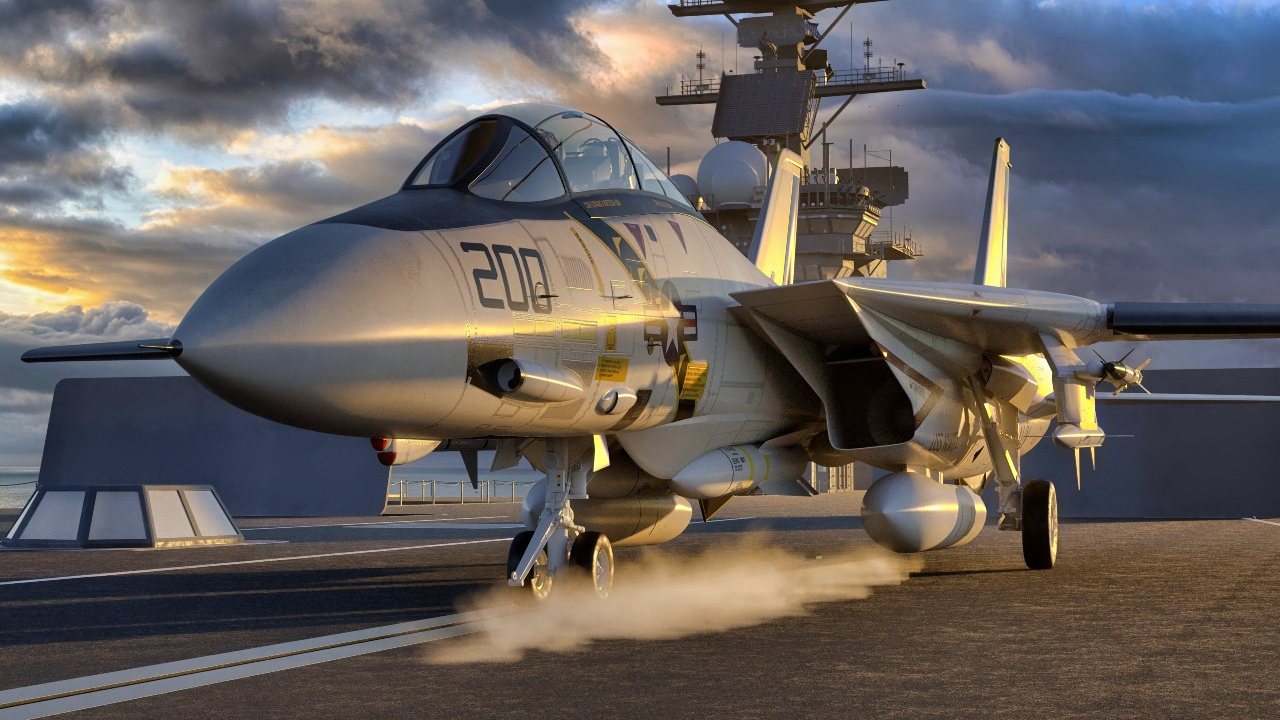The Story of The Last U.S. Navy F-14 Tomcat: Meet 'Felix 101'
The final flight of the U.S. Navy's Grumman F-14 Tomcat occurred on September 22, 2006, concluding its service era. Renowned for its role in "Top Gun," the Tomcat remains beloved among aviation enthusiasts.
Summary: The final flight of the U.S. Navy's Grumman F-14 Tomcat occurred on September 22, 2006, concluding its service era. Renowned for its role in "Top Gun," the Tomcat remains beloved among aviation enthusiasts. Despite a 2008 DoD ban on F-14 part sales due to Iranian purchase attempts, several Tomcats are preserved in museums. The last F-14D to fly, BuNu 164603, now resides at the Cradle of Aviation Museum in New York, restored to its former glory. This museum also houses the third-built and oldest surviving F-14, showcasing the iconic warbird's enduring legacy in aviation history.
Final Salute: The Last Flight of the F-14 Tomcat and Its Enduring Legacy
The final flight of the United States Navy's Grumman F-14 Tomcat took place on September 22, 2006, marking the end of an era for the venerable warbird. While it gained fame after appearing in the 1986 film Top Gun , even two decades after it was retired from service, the Tomcat remains a favorite with aviation buffs.
Today, a few dozen F-14s are now on display at various military bases and aviation museums. However, after Iran attempted to purchase spare parts for its fleet of Tomcats – which were acquired before the 1979 Islamic Revolution – the United States Department of Defense (DoD) announced in 2008 that the sale of any parts for the F-14 were banned, and remaining stock of spare was to be shredded.
That could make it increasingly difficult for retired Tomcats to be restored, even as static display – and it would be safe to say that we should be grateful for those that are now in museums.
The Very Last F-14 Tomcat Lives On
What is notable about the history of the F-14 Tomcats is an F-14D, Bureau Number (BuNu)164603, number 711 of the 712 Tomcats built, and the last U.S. Navy F-14 to ever fly is now preserved at an aviation museum on Long Island, New York.
According to the Aviation Geek Club, that particular aircraft had been delivered to the U.S. Navy on May 29, 1992 at NAS Miramar to Fighter Squadron 124 (VF-124) "Gunfighters," the West Coast Tomcat Fleet RAG (the Replacement Air Group, the naval training squadron for a specific aircraft), and subsequently became one of the first D-model aircraft assigned to VF-2 in June of the following year.
Aircraft BuNu 164603 was transferred to VF-213 in late 1997, remaining with the "Black Lions" until it was then passed on to VF-101 in early 2002. During its time with VF-213, the aircraft led the first manned strike of Operation Enduring Freedom (OEF), when F-14s and F/A-18s from CVW-11 hit an SA-3 SAM battery, and its attendant target acquisition and guidance radars, near Kabul's international airport on Oct. 7, 2001.
It completed its 14 years of service with VF-3, the very last F-14 squadron, where it was operated as "Felix 101." The aircraft made its final flight when returned "home" to Long Island on October 4, 2006, and following its retirement from service, it was displayed at Grumman's facility at 600 Grumman Rd. West.
Northrop Grumman along with the Grumman Retiree Club, a former employees group, even created a monument to honor its history and preserve the legacy of the Tomcat.

Time and the elements took a toll on the old warbird, and after the facility was closed and subsequently sold, the jet soon made its way to its final home in the collection of the Cradle of Aviation Museum in Garden City, New York.
Northrop Grumman sponsored and financially supported the restoration of the historic F-14D, while a committed professional crew skillfully ensured that it was brought back to its glory.
In September 2023, a large crowd that included museum officials, restoration volunteers, and aviation enthusiasts from across the country gathered at the Cradle of Aviation Museum for the unveiling of the restored sleek, twin-engine, swept-wing fighter at its inauguration. Felix 101 is now permanently displayed at F-14 Tomcat Plaza, outside of the entrance to the museum's main building.
It can also be said that Felix 101 is in good company, as the Cradle of Aviation Museum is home to the third F-14 ever built, and the oldest surviving – which had flown from 1971 to 1990. In addition, the facility's collection includes two F-14 cockpits, an aircraft nose, and multiple flight suits – all a testament to the F-14 Tomcat story.
Author Experience and Expertise: Peter Suciu
Peter Suciu is a Michigan-based writer. He has contributed to more than four dozen magazines, newspapers, and websites with over 3,200 published pieces over a twenty-year career in journalism. He regularly writes about military hardware, firearms history, cybersecurity, politics, and international affairs. Peter is also a Contributing Writer for Forbes and Clearance Jobs. You can follow him on Twitter: @PeterSuciu.
You can email the author: [email protected].
Images Credit: Shutterstock.


